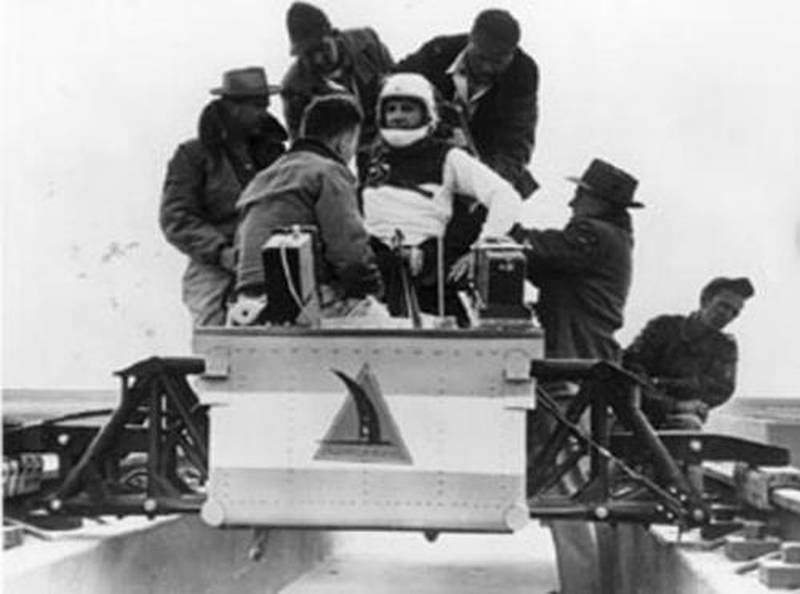Famous sentence “If anything can go wrong, it will.” was coined in 1948 at Edwards Air Force Base. It was named after Captain Edward A. Murphy, an engineer working on Air Force Project MX981.

Murphy’s assistant was installing gauges to measure the G-forces a test-dummy would receive on a rocket-sled blasting forward on a 1.9-mile track.
When the instruments read zero after the test-run, Murphy berated his assistant saying, “If there’s more than one way to do a job and one of those ways will result in disaster, then somebody will do it that way.”
The following article was excerpted from The Desert Wings:
March 3, 1978
Murphy’s Law (“If anything can go wrong, it will”) was born at Edwards Air Force Base in 1949 at North Base.
It was named after Capt. Edward A. Murphy, an engineer working on Air Force Project MX981, (a project) designed to see how much sudden deceleration a person can stand in a crash.
One day, after finding that a transducer was wired wrong, he cursed the technician responsible and said, “If there is any way to do it wrong, he’ll find it.”
The contractor’s project manager kept a list of “laws” and added this one, which he called Murphy’s Law.
Actually, what he did was take an old law that had been around for years in a more basic form and give it a name.
Shortly afterwards, the Air Force doctor (Dr. John Paul Stapp) who rode a sled on the deceleration track to a stop, pulling 40 Gs, gave a press conference. He said that their good safety record on the project was due to a firm belief in Murphy’s Law and in the necessity to try and circumvent it.
Aerospace manufacturers picked it up and used it widely in their ads during the next few months, and soon it was being quoted in many news and magazine articles. Murphy’s Law was born.
Sources:
http://en.wikipedia.org/wiki/Murphy’s_law
http://en.wikipedia.org/wiki/Edward_A._Murphy,_Jr.
http://people.howstuffworks.com/murphys-law1.htm